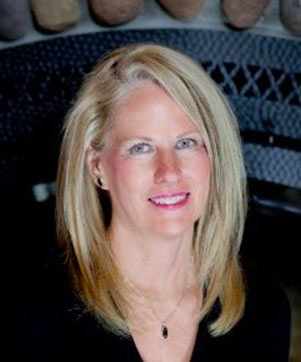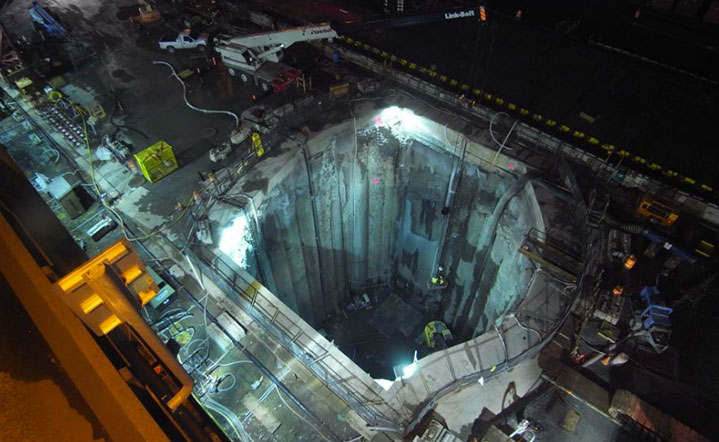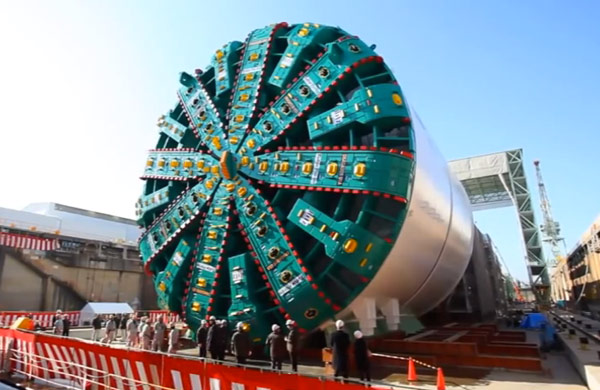Seattle axes SR99 Expert Review Panel 8 July 2015
Seattle SR99 Expert Review Panel (ERP) Chairwoman Patricia Galloway says she is “shocked, disappointed and aghast” at the decision by Washington State Legislature to end independent oversight of the US$3.1 billion Alaskan Way Viaduct Replacement Project.
Speaking to TunnelTalk, Galloway said the State Legislature’s sudden and unexpected decision to terminate its five-year contract with the independent SR99 Expert Review Panel could result in a total breakdown of the carefully restored relationship between Washington State Department of Transportation (WSDOT) and its design-build contractor Seattle Tunnel Partners.
In all her experience of working on the independent review boards of some of the world’s largest projects, Galloway said this was the first time a project owner had acted this way. “I have never been on a review panel where we have not gone, quite literally, through to the end of the project, and I have been heavily involved on oversight boards for at least the last decade.”
It is understood that the State Legislature, and more specifically its Transportation Committee, will now carry out ad hoc SR99 project oversight responsibility. It is not known, however, how transparent this process will be, whether any reports issued will be in the public domain, or whether independent experts will be called to investigate any concerns that the Legislature has as the project moves forward. Either way, it is likely that STP will view a State Transportation Committee-led oversight function as being skewed in favour of the project owner, WSDOT.
Galloway said she had not been given any reason for the decision to dismiss the Expert Review Panel, but said she had heard, “incredibly”, that the State Transportation considered the ERP “may not have the appreciation for how to understand disputes.”
“What is unfortunate right now is that we don’t really know who said what to whom, but our understanding is that the decision to terminate has come from the State’s legal counsel. Outside counsel had advised that there was potential additional risk exposure because we were independent and a third party to the project.”
The three-member Alaskan Way Expert Review Panel (EPR) was established in September 2011 by the Governor of Washington and the State Legislature to report on and update, a previous 2006 ERP report by a different panel of experts and to carry out an independent financial and technical review of the US$3.1 billion project's key assumptions, and its finance and risk management plans.
It has issued an annual report each February since then, including the latest one released on year April 3, 2015. The panel members since 2011, are:
Dr Patricia Galloway, Panel Chair, is a civil engineer with 36 years of mega-project experience in mega-projects, transportation programs, and project delivery. She has served as an advisor to private and public owners and contractor clients, and has served as a member of various risk management assessment and independent review panels. Dr Galloway is an elected member to the National Academy of Construction and the Pan American Academy of Engineering. In 2004 she served as the first woman President of the American Society of Civil Engineers (ASCE).
Robert Goodfellow, Senior Vice President of tunneling and geotechnical engineering firm Aldea Services, has more than 20 years of experience in the underground construction industry, specializing in project management risk. He has worked on transit systems in London, New York, Washington DC, Copenhagen and Toronto, and is a former Associate Vice President and Director of Tunneling at Black & Veatch.
John Rose has more than 30 years of experience in public sector budgeting and financing, including prior experience as King County Budget Director in Seattle and as President and CEO of Seattle Northwest Securities Corporation.
In other words, the State feared that allowing an independent third party to publish potentially sensitive information as part of its troubleshooting remit might lead to legal problems at a future litigation stage.
This year’s ERP report (2015) highlighted the financial risks faced by the project, but raised hopes that contingency funds may well cover the cost to the public purse. In 2014 the ERP highlighted friction between WSDOT and STP as a clear threat to the delivery of the project, and made recommendations as to how to improve the situation. It is now feared that the relationship between owner and contractor will become strained once again.
“We were the ones that actually were able to get them talking together, and were even talking about how to resolve their issues now to avoid a big dispute at the end – which would have been in everyone’s best interests,” explained Galloway. “But now they’ll have no truly independent view on who’s potentially right and who’s potentially wrong – not in the sense of responsibility, it’s not our job to determine responsibility, but it was our job to sort out true facts on the project and to present those facts so that people had context around their decision-making.”
Galloway now fears that without an expert, independent and transparent review board – which is charged with acting in the interests of the project, rather than any of the partners responsible for delivering it – there is a real danger that an ill-informed public may begin to heap pressure on the politicians to abandon SR99 mid-construction.
April 2015: Bertha recovery operation
“The public in Seattle were up in arms before our latest (2015) report came out in April this year. At about that time there was a movement to potentially get this project stopped – and let’s remember Seattle has done that before with the monorail project,” said Galloway. “There are people who think we should just stop this project and do something else. That would be a tragedy, an absolute tragedy, but this is what happens when you have insufficient information for the public to understand truly what is going on. One of my biggest fears is what the reaction of the public could potentially be if they don’t have [independently verified] factual information.”
The five-year ERP contract – which cost the State “considerably less than $500,000 a year” – was cancelled in writing last month at ten days notice. The cancellation comes as the project reaches one of its most critical phases. TBM Bertha has been stationary since December 2013 and is currently undergoing costly and lengthy repairs; there is uncertainty about whether the world record machine will meet the revised August schedule for the resumption of mining operations; and the relationship between WSDOT and STP is constantly under stress. Against this backdrop there is ongoing disagreement between the two parties to the contract over responsibility for the TBM breakdown, meeting the revised construction schedule, and the potential cost and time overruns that now appear inevitable. The Disputes Review Board process also appears to have reached deadlock, with both sides having rejected previous findings.
“In our view this was absolutely the best time that they [the Legislature] should have had us on board. This project was getting into what I really thought was the critical time and we were making what I thought was great progress in improving the relationships between the project teams at both STP and WSDOT,” said Galloway. Over the last two years the ERP has succeeded in building trust between WSDOT and STP, and facilitated joint risk meetings, a joint risk register, and joint meetings to resolve issues.
In each of the last four years the ERP has published an independent public report to the State Legislature – along with recommendations about what needs improving – based on its review of thousands of pages of project documentation and interviews with up to 45 project staff from both WSDOT and STP.
One of the greatest achievements of the ERP thus far has been to gather quality information from the Dragados/Tutor Perini contractor team. “STP have been very open with us, extremely open with us in fact. They knew we were independent and that we didn’t work for WSDOT and we didn’t work for them, and they also understood that we were trying to better the project and lower the risk. Therefore they were sharing a lot of information with us,” explained Galloway.
The extent of STP’s cooperation with the work of the ERP is best demonstrated by its decision earlier this year to facilitate a meeting between Galloway and its machine supplier, Hitachi. The meeting would have given a greater understanding of the problems suffered by the TBM, as well as critical insights into the likelihood of resuming mining in August, and predicting a more accurate tunnel completion date.
Galloway explained: “The meeting with Hitachi was all set up, and then we received a call from WSDOT to say the meeting was cancelled. Outside legal counsel [for the State] thought that it would be a risk to have an outside body talking to a subcontractor of STP [Hitachi]. STP themselves were shocked, completely shocked. They worked very hard to get us that meeting. Quite literally, the VP from Hitachi was ready to get on an airplane from Tokyo to Seattle to meet with us at the time we received the call.”
She added: “That was very disappointing because I do believe that the contractor was trying to provide us with as much information as they felt reasonably that they could, given their legal position. But I do believe we would have got more information which would have assisted the State in understanding the magnitude of the issues with the machine, and the probability of being able to resolve those issues and how that would that would affect the mining efficiency going forward. And now they’re not going to have that. Now it’s going to be more a ‘let’s see what happens’ situation than anything like a reasoned basis that a third party independent expert can advise them on. We’re never going to be told the root cause of the TBM breakdown and we understand that – that is the legal position; and in fact we are not interested knowing the root cause, what we want to know is what the repairs are and how that's going to affect the efficiency of the machine going forward; and that's what our discussion was going to centre around.
“We were planning to do a mid-year report this year to be able to actually make some independent findings on the repairs to the machine, the realistic date for completion, what the realistic view of the cost might be, and an examination of what solutions are actually being working on, and whether they are really going to result in the resumption of mining in August. Well, that’s not going to happen now!
“I haven’t seen one response to this yet, from outside the Legislature, that think this is a good idea. Even WSDOT and STP themselves have been silent to the media. The lack of transparency will raise additional and potentially unfounded questions with the public, and the resolution of potential disputes between WSDOT and STP will be potentially more difficult to resolve without third party input.”
WSDOT Secretary Lynn Peterson said: "We are looking forward to working with the Legislature to implement their preferred method for reporting the status of the project.” Spokeswoman Laura Newborn added that the Expert Review Panel had been set up by the State Legislature and that it had been a “legislative decision to change the method of oversight.”
References
- Expert Review Panel Report, April 2015

- Expert Review Panel Report, February 27, 2014

- SR99 tunnel budget stretched to the limit (ERP Report 2015) – TunnelTalk, April 2015
- STP-WSDOT clashes threaten Seattle project (ERP Report 2014) – TunnelTalk, March 2014
- DRB examines Bertha obstruction case – TunnelTalk, May 2015
- STP wins latest round of DRB claims – TunnelTalk, 4 February 2015
- WSDOT concern over DRB obstruction ruling – TunnelTalk, May 2015
- Lok Home reflections on the Alaskan Way mega-drive – TunnelTalk, March 2015
- Seattle TBM recovery shaft repair row – TunnelTalk, January 2015
|
|
|
|
|
Add your comment
- Thank you for taking the time to share your thoughts and comments. You share in the wider tunnelling community, so please keep your comments smart and civil. Don't attack other readers personally, and keep your language professional.





